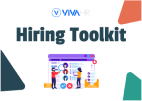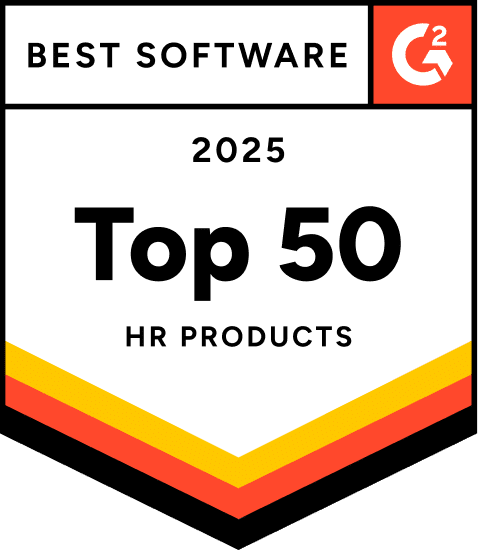Home » Industry News 2 » Free Job Posting Software Emerges as Option for Budget-Conscious Employers
Wednesday, August 27th, 2025
In a bustling Los Angeles taco shop, the owner sifts through a pile of applications, each one a potential lifeline for a business stretched thin by rising costs and a relentless labor shortage. Small businesses across the U.S. face this same crunch, balancing the need to hire with budgets that can’t compete with corporate giants. Yet, a quiet revolution is underway. Free job posting software and applicant tracking systems (ATS) are emerging as powerful tools, enabling entrepreneurs to recruit talent without draining their accounts. These platforms are not just a stopgap they’re reshaping how small businesses navigate the hiring landscape.
The recruitment industry is undergoing a seismic shift. The global market for job board software, valued at $5.35 billion in 2025, is projected to reach $9.29 billion by 2034, growing at a steady compound annual growth rate of 6.32%. This expansion reflects the growing popularity of freemium and open-source ATS platforms, which allow businesses to post jobs, filter candidates, and manage hiring pipelines at no cost. These tools serve as digital hubs where employers list openings and job seekers find roles that match their skills, complete with features like resume uploads and candidate screening.
Several forces are fueling this trend. The rise of remote work and the gig economy has pushed small businesses to adopt flexible, do-it-yourself hiring solutions. Platforms like Indeed, Google Jobs, and LinkedIn Basic offer free posting options that integrate seamlessly with many ATS tools. Meanwhile, a wave of startups is flooding the market with cloud-based platforms tailored for small businesses, boasting user-friendly designs and mobile-optimized interfaces. According to industry insights, 61% of these platforms now feature automated job matching, and 47% connect with external ATS and CRM systems, streamlining recruitment for resource-strapped teams.
Consider a small craft brewery in Austin. Using a free ATS, the owner posts a job for a part-time bartender across multiple job boards with a single click, filters applicants by experience, and tracks progress through a dashboard that rivals premium competitors. Such efficiency is transformative for businesses where every dollar counts.
Real-World Wins for Small Businesses
From coast to coast, small businesses are harnessing these tools to compete in tight labor markets. A family-run hardware store in Wisconsin, for example, adopted a free ATS to manage hiring across its four locations. By syncing with LinkedIn Basic, the store filled two sales associate roles in just 10 days, saving thousands compared to traditional recruitment agencies. The owner praised the platform’s ease of use, noting it significantly reduced their hiring timeline.
Tech startups, often operating on shoestring budgets, are also reaping rewards. A San Francisco-based app developer used Google Jobs integration to source candidates for a front-end developer role. With a team of just eight, the company couldn’t afford high-end software, but the free platform’s resume screening and application tracking tools delivered a shortlist of qualified candidates. As one HR manager put it, “We didn’t just save on costs we saved time, which is critical when you’re racing to grow.”
These successes align with market trends. The global job board software market, worth $567.27 million in 2024, is expected to hit $611.4 million in 2025 and climb to $1.11 billion by 2033, driven by a robust CAGR of 7.78%. The U.S. accounts for over 41% of this market, highlighting the demand for accessible hiring solutions among American small businesses.
Free software comes with caveats. Customization is often limited, which can frustrate businesses in niche industries. A boutique gym in Atlanta, for instance, found it challenging to adapt a generic ATS to screen for certified personal trainers. Scalability is another issue free plans typically restrict the number of job postings or users, pushing growing businesses toward paid tiers sooner than expected.
Data security is a more pressing concern. Freemium and open-source platforms may lack the robust protections of premium competitors, posing risks for businesses handling sensitive candidate data. Customer support is another weak point, with free users often limited to email-only assistance or community forums. And then there’s the candidate experience: poorly designed interfaces or non-mobile-optimized platforms can drive applicants away. Research shows that 60% of job seekers abandon applications if the process isn’t mobile-friendly a feature not all free tools prioritize.
Yet, for many, the benefits outweigh the drawbacks. A New Orleans café owner, frustrated by the high fees of a recruitment agency, switched to a free ATS and used its basic analytics to identify top candidates faster than manual reviews. “It’s not fancy,” she said, “but it works.”
Maximizing Efficiency on a Budget
Free job posting software empowers small businesses to compete with larger rivals. In a market where corporate giants flaunt polished career pages and hefty recruitment budgets, these tools offer a level playing field. Integrations like Zapier or email parsing enhance functionality, automating tasks like scheduling interviews or sending follow-up emails. Even basic analytics, available in many free plans, provide insights into applicant trends, helping owners refine their strategies.
The job search software market, valued at $3.01 billion in 2024, is projected to grow at a CAGR of 11.4% from 2026 to 2033, reaching $8.04 billion. This growth is driven by digital transformation, with businesses investing in tools to streamline hiring. The demand for virtual interviewing and onboarding features, spurred by remote and hybrid work models, is also boosting adoption, even in free tiers.
Smart businesses treat these tools as a testing ground, trialing features before upgrading to paid plans. A Minneapolis bakery, for instance, used a free ATS to hire seasonal staff, then seamlessly transitioned to a premium tier as its needs grew, with no disruption to its hiring pipeline.
A Sustainable Path Forward
Industry experts view free ATS models as a lasting trend, but with nuance. “Free tools are an entry point,” one analyst notes, “but businesses must balance cost savings with long-term needs.” The future is promising, with AI-driven features like predictive analytics and automated candidate matching increasingly appearing in freemium platforms. The U.S. recruitment software market reflects this evolution, with users praising platforms for their responsiveness and flexibility in delivering timely, cost-effective solutions.
For small businesses, the path forward involves careful evaluation. Prioritize platforms with mobile optimization, ATS/CRM integrations, and reliable analytics. Test the candidate experience by applying to your own posting does it feel seamless? Verify security protocols to safeguard data. And don’t hesitate to explore multiple tools to find the best fit.
In an era of tight budgets and fierce competition, free job posting software is more than a cost-cutting measure it’s a strategic asset. From taco shops to tech startups, small businesses are proving they can hire effectively without breaking the bank. As the labor market continues to evolve, these tools offer a foundation for growth, empowering entrepreneurs to build their teams, one smart hire at a time.
Frequently Asked Questions
What is free job posting software and how does it help small businesses?
Free job posting software includes applicant tracking systems (ATS) and recruitment platforms that allow businesses to post jobs, filter candidates, and manage hiring pipelines at no cost. These tools enable small businesses to compete with larger companies by providing access to multiple job boards like Indeed, Google Jobs, and LinkedIn Basic through a single platform. Many free platforms now offer features like automated job matching, resume screening, and basic analytics that were previously only available in premium software.
What are the main limitations of using free ATS and job posting platforms?
Free job posting software typically comes with several trade-offs including limited customization options, restricted number of job postings or users, and potential scalability issues as businesses grow. Other concerns include weaker data security protections compared to premium competitors, limited customer support (often email-only), and candidate experience issues if the platform isn’t mobile-optimized. Research shows that 60% of job seekers abandon applications that aren’t mobile-friendly, which can be a problem with some free tools.
How much is the job board software market expected to grow, and what’s driving this growth?
The global job board software market is valued at $5.35 billion in 2025 and is projected to reach $9.29 billion by 2034, with a compound annual growth rate of 6.32%. This growth is driven by the rise of remote work, the gig economy, and increasing adoption of cloud-based platforms tailored for small businesses. The trend toward freemium and open-source ATS platforms is particularly strong, with 61% of platforms now featuring automated job matching and 47% connecting with external ATS and CRM systems.
Disclaimer: The above helpful resources content contains personal opinions and experiences. The information provided is for general knowledge and does not constitute professional advice.
You may also be interested in: Workable vs Zoho Recruit: Check Out the Alternative ATS
Struggling with slow hiring? Open roles drain time, overwork teams, and stall growth. AvaHR transforms recruitment: post to 100+ job boards in one click, track candidates with live dashboards, and collaborate seamlessly via email or SMS. Trusted by hundreds with a 4.9★ rating. Don’t let delays hold you back your next great hire is waiting! Start your free trial today no credit card needed or get a personalized demo to see AvaHR in action.
Powered by flareAI.co





